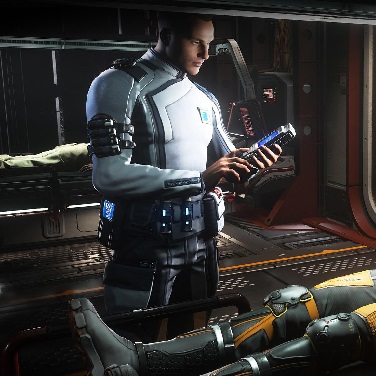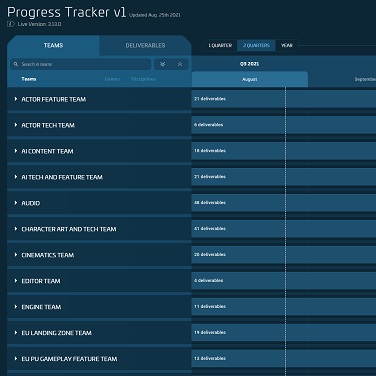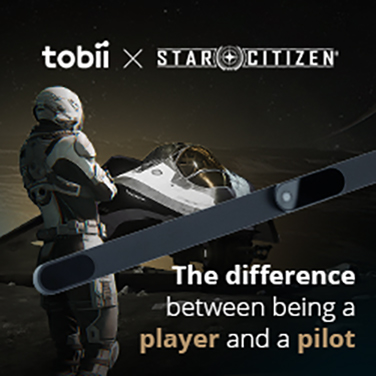Since the very earliest days of Star Citizen, the game always embraced the idea that there would be meaningful consequences for player death. Commonly referred to as “Death of a Spaceman” from the title of the original post on the subject, the hope was to create a dangerous universe that would give real weight to choices and reward players with a true sense of accomplishment if they could complete an adventure still intact. We wanted you to see your avatar as something to be cared for as much as your ship.
As discussed by Chris Roberts and Richard Tyrer on the October 30th, 2020, episode of Calling All Devs, development on Star Citizen’s Alpha had progressed to the point where active development of this vital gameplay loop could begin. With the Actor Feature team leading the charge, medical gameplay has been refined to the point where the Alpha 3.15 patch is expected to bring with it the release of Healing Tier 0.
To coincide with this brand new gameplay, the Narrative team has been working on some brand-new lore. While we always knew that medical science would be advanced enough to bring you back from the brink of death, it was during the recent development period that it was decided that players would benefit from being able to come back even if their avatar’s body was completely lost.
While a lot of scenarios could have been explained away by diligent NPC emergency response teams finding injured players and bringing them back to civilization, with a game like Star Citizen, there were a lot of cases where even the bravest ambulance pilots wouldn’t have been able to retrieve you. Imagine a bold explorer flying themselves directly into the sun or some friendly outlaws firing a Size 9 torp directly at your head. What ambulance is going to rescue you from that? While we could have declared those instances to be perma-deaths and force the player to hand off everything to their next of kin, we were worried about how punishing this would be for people new to playing the game.
This is why it was decided that Star Citizen needed to have a technology akin to “cloning,” where players could bring their avatars back from death itself but with a few key requirements the lore would have to address:
- Your avatar’s memories had to be passed on. No point in making a biological copy if they can’t remember anything.
- The process needed to degrade over time so that people in the universe are not immortal.
- How your avatar perished should be reflected in their new body. If you got blown up, we wanted to see those scars and cybernetic limbs.
- We also wanted characters to age and not just hop into a younger version of themselves.
- There should only be one copy of someone at a time. No clone armies running around.
With all these additional elements to work in, it became clear early on that traditional ideas of DNA scans and cloning wouldn’t quite meet our needs. Instead, the Narrative team worked to create our own fiction to explain the science behind these 30th-century medical miracles. Please give a warm Star Citizen welcome to “Regeneration.”
Below is a breakdown of some important terms relating to regeneration (some of which you will be seeing in Alpha 3.15) as well as a brief history of the development of this new technology.
But before you get to the new fiction there is one more “Re” word to discuss – “Retcon.” Since we needed regeneration to be fairly commonplace and widespread in 2951 in order to match the gameplay, we had to set the timeline of the lore earlier. However, we also didn’t want to invalidate too much earlier lore where characters got killed and stayed dead. This means that the people of the ’verse have been living with regeneration a bit longer than you as players have, but not too much longer. Moving forward, all lore should hopefully correctly incorporate the history of regeneration and its effect on the lives of the people living in the UEE and beyond.
And of course, as with all our systems in active development, expect the below to keep being refined as the gameplay matures. Our hope is that this will serve as a solid foundation from which we can build from.
Finally, feel free to ask questions on the Lore Ask a Dev forum on Spectrum, and we will try to answer what we can in our upcoming quarterly Loremakers: Community Questions posts.
TERMINOLOGY
Imprint
The term for a complete and holistic bioscan of an individual that not only creates a record of one’s DNA, but also all their memories, thoughts, and personality. While imprints can be transferred between spheres without loss, only one copy of an imprint can exist at the same time. Updating an imprint will override all previous imprints.
Regeneration
This is the term for the process in which an imprint is used to recreate the deceased source. Using the information stored in the imprint, a new body is regenerated that is a near-identical copy of the original barring the effect of any echos.
Ibrahim Sphere
The technology inside medical beds and scanners that allows them to create and store imprints. Made out of advanced materials that are alien in origin, the technology behind the spheres was made public to encourage mass production and development. It is important to note that not all spheres are created equal. Higher quality spheres are better able to preserve imprints and cause less trauma during the regeneration process, allowing for more cycles before viability failure.
Traumatic Response Echo (TRE)
Known commonly as an ‘echo,’ this is the term used to describe the link between an imprint and its source. When a major traumatic event occurs, such as death or even regeneration itself, the psychological impact of it can sometimes be strong enough to permanently alter the imprint. For example, if a person’s legs are crushed prior to death, there’s a possibility that an echo will be created that will alter the imprint so that the individual’s legs are no longer functional. Echos are the reason why patients may regenerate bearing the scars and wounds of how they died and why only one copy of a person can exist at a time. Regeneration itself also creates echos, and over time an individual’s imprint will degrade and become less viable. This is also why imprints cannot be used to extend life as the process of aging itself echos through the imprints. However, testing has shown that the higher quality the medical equipment and sphere, the less severe the impact of echos will be.
Imprint Viability Score (IVS)
This is the number used to rate the viability of an imprint to be used in regeneration. Owing to the degradation experienced from echos, imprints eventually become so damaged they are no longer viable, and the individual will no longer be able to be regenerated. Using higher quality imprints and equipment helps prolong a patient’s IVS.
Regen
Term for an individual who has undergone regeneration. Also slang for the process of regeneration itself.
Cycle
This term references the period between regenerations. People will ask each other what cycle they are on to inquire how many times they have been regenerated. People are sometimes impressed by how long others have gone without needing a regen.
Gap
The term refers to the length of time between an imprint being made and when someone is regenerated. The longer the gap, the more memories and experiences will be lost. Frequent imprinting is strongly encouraged.
BiotiCorp Regen Serum
This advanced progenerative distillate is used as a base material from which cells, tissues, and organs can be bioprinted for use in regeneration.
Wiped
This is the term used to express when someone’s IVS is low enough that they can no longer be regenerated. The term originated from reference to an imprint being permanently wiped from an Ibrahim sphere. Outlaws will sometimes refer to “wiping” someone out as killing them in a manner that will stop them from regenerating. Also can be referred to as “ghosting.”
Dead / Kill / Murder / etc.
As regeneration is still a relatively new technology, these terms still refer to the stopping of life functions, regardless if the individual is able to be regenerated or not.
HISTORY
Famed scientist Dr. Aka Ibrahim has dedicated his career to finding a way to restore mental capacity to patients suffering from severe head injuries, brain trauma, or the ravages of degenerative diseases by obtaining detailed scans of their brain before trauma occurred. In early experiments, Dr. Ibrahim was able to repair some brain functionality, like motor functions, but any attempts to restore memories or personality were unsuccessful. While his breakthrough in brain scans helped many patients regain some functionality, if a major mental loss occurred, it seemed there was little chance of fully restoring the person.
Based on his reputation as a medical scan expert, in 2932 Dr. Ibrahim was invited by the UEE government to study captured Vanduul biogenetic scanning technology. The recovered salvage was more advanced than anything that Humans had developed and even seemed beyond much of the Vanduul tech that had been previously studied. Dr. Ibrahim and his team were scarcely able to deconstruct the technology they found or even fully understand how and why the Vanduul were using it. However, it wasn’t until a covert naval operation in 2946 that new military intelligence allowed Dr. Ibrahim to unlock the full potential of the technology.
Ibrahim Sphere
The end result of years of research and the creation of advanced xenomorphic materials inspired by the captured Vanduul technology, the innovative Ibrahim Sphere allows for complete biogenetic imprints to be made of a person. Far beyond just DNA and mental scans, the imprint captures a complete version of someone including their memories and even their personality. The most surprising thing however is that the imprint does not remain static after it’s made.
Traumatic Response Echos
While the process is still not fully understood, the information recorded onto the sphere retains a connection to its source. If the source undergoes any major life experiences such as a traumatic injury or death, the imprint is permanently altered, known commonly as a “Traumatic Response Echo” or simply “echo.” Attempts at using imprints while the source is still alive have all resulted in failure. A leading hypothesis currently being studied is that the unique properties of the sphere may be creating a connection similar to quantum entanglement, linking the imprint to its source across interspace.
While at first the discovery of echos left Dr. Ibrahim feeling dismayed as he had hoped to be able to repair still living patients, a new medical path forward presented itself when the Ibrahim Spheres were paired with new groundbreaking tech developed under military contract by BiotiCorp.
Regeneration
In 2949, the first successful regeneration of a Human occurred using rapid bio-printing technology created by BiotiCorp and the imprint information stored on an Ibrahim Sphere. Recognizing this breakthrough’s potential, Imperator Addison authorized trillions of credits into making the technology as widely available as possible, going so far as to make the specifications for the Ibrahim Sphere public so that multiple companies could produce the scanners and bioprinters needed. Today, while the regeneration process remains costly, even the lowliest space station is equipped with an imprint-capable medical scanner and billions of lives have been saved.
However, as with any technological breakthrough, there are still a lot of doubts over the tech. Religious groups have protested what they see as the capture of a being’s soul and some economic groups have expressed worry that the sudden extension of life will have a serious impact on society. Also, despite assurances that creating multiple imprints of the same person is technologically impossible, the fear of clone armies remains. To help with this, the government has already placed severe laws around the possibility of attempting to grow multiple versions of an individual as such a feat would cause havoc on the notion of taxation and criminal justice.




